Trending Post : Easy Fixes for Behavior Challenges


25 Awesome SEL Read Alouds for Elementary Learners
Social-Emotional Learning, also called SEL, is finally being recognized for the important role it plays in student success. Today I wanted to share 20 amazing SEL read alouds that will resonate with your elementary students. I’ve included both picture books and chapter books so you’ll find plenty of options to meet the needs of your classroom.
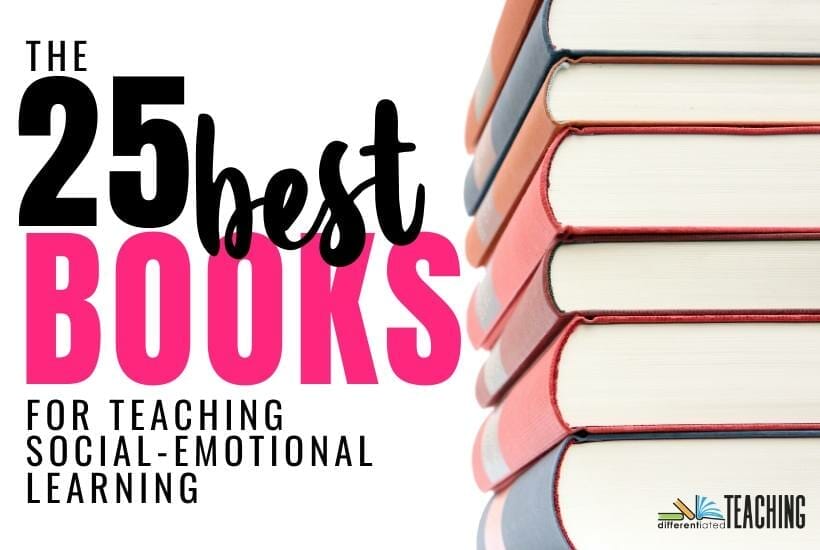
The Best Picture & Chapter Books for the SEL Classroom
1. the invisible boy by patrice barton.
Brian is the invisible boy. Invisible because nobody notices him or includes him in their games or activities. One day Justin, a new boy, comes to school and teams up with Brian on a project. This interaction changes Brian’s life and shows everyone how much he has to offer.
A great book to share that will especially speak to the introverts in the group.

2. Enemy Pie by Derek Munson
Why, oh why, did Jeremy Ross have to move to the neighborhood and ruin everything? A perfect summer, now headed straight for the dumpster. Fortunately, dad has a plan for getting rid of enemies – his secret recipe for Enemy Pie. The strange thing is that part of the recipe includes spending an entire day with the enemy! This endearing story of turning and enemy into a friend will amuse and intrigue while teaching a lesson of inclusion.
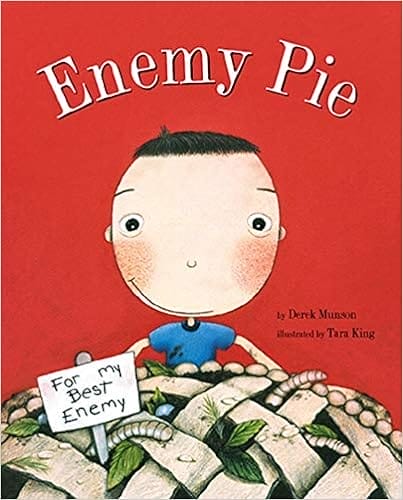
3. The Memory String by Eve Bunting
Laura sits with memories of her mother while trying somehow to tolerate her new stepmother. Each button on the memory string represents a piece of her family history, and when the string breaks, her heart breaks with it. When her new stepmother genuinely tries to help, Laura’s opinion of her changes. Bunting’s moving story of grief through the eyes of a child will resonate with readers of all ages.

4. Don’t Think About Purple Elephants by Susanne Merritt
Our students worry. Some fret just a little, while others are fraught with heart-pounding anxiety, even in elementary school. Sophie, the main character, is one such student. Her mom comes up with a strategy to help Sophie calm herself. Children everywhere will appreciate the humorous, elephant-infused way Sophie and her mom tackle her anxiety.

5. Fish in a Tree by Lynda Mullaly Hunt
Approximately 5-10% of students are dyslexic. That means there’s very likely a student with dyslexia in your class – even if they haven’t been identified. This book is a must-read for those students & their peers.
There are many ways to distract a teacher. Ally knows this, and she uses every trick in the book to keep a teacher from realizing she cannot read. In Mr. Daniels, however, she has met her match. He is determined to figure out the real Ally. In the process, Ally finds that she is actually very intelligent, and her dyslexia doesn’t have to define her.

The complex characters and rich plotline make this chapter book a must-read. It will speak both to those students who struggle academically and those who might not be their kindest all the time.
6. My Mouth is a Volcano! by Julia Cook
Louis has a bad habit – interrupting! This story shows the struggle going on in Louis’ body. His words are fighting to escape his brain, jump onto his tongue, and burst right out his mouth. Louis realizes what a problem it is when others begin interrupting HIM.
This book is great for talking about taking turns and giving everyone a chance to share their thoughts.

7. The Name Jar by Yangsook Choi
Unhei is new to the school. Rather than telling people how to say her name, she asks her classmates to make a name for her. After trying out each name, she recognizes that her name has an importance that she shouldn’t have to surrender.
The multicultural aspect of this book makes it even more relevant to many audiences. Everyone’s name is important, after all.

8. After the Fall by Dan Santat
What fun when traditional storybook characters become multi-dimensional!
In this lovely story, we catch up with Humpty Dumpty after his famous mishap. What happens next? Well, getting up from a fall, whether literal or metaphorical, can be tricky. Humpty recovers outwardly but still has trauma on the inside.
A great book for addressing emotional resiliency.

9. Emma https://amzn.to/3apwwnP nuel’s Dream: The True Story of Emmanuel Ofosu Yeboah by Laurie Ann Thompson
This true story (which was also made into a film narrated by Oprah Winfrey) tells the story of Emmanuel, who was born in Ghana, West Africa. Dismissed by most people because of his deformed leg, he is encouraged to pursue his dreams by his mother. As a result of her love and encouragement, he hops more than two miles each way to school, learns to play soccer, and eventually becomes a cyclist. Emmanuel’s powerful message is this: disability is not inability.
An inspirational story for every child about overcoming obstacles.

10. We’re All Wonders by RJ Palacio
This picture book follows Auggie and his dog Daisy on an original adventure. Wonder has been a national bestseller since its debut. Now the message is being communicated via picture book for younger readers.
Every child’s hope to belong is recognized in this book, which is the perfect vehicle for discussing empathy and kindness with young children.

11. What Were You Thinking? A Story About Learning to Control Your Impulses by Bryan Smith
Part of the Executive FUNction Series written by a school counselor, this book focuses on impulse control, developing friendships, and controlling emotions. Third-grader Braden enjoys being the center of attention and fancies himself quite the comedian. When a bad decision and impulsive reaction leave a classmate very hurt one day, the adults in Braden’s life come together to help him manage his impulses.

12. My Day Is Ruined!: A Story Teaching Flexible Thinking by Bryan Smith
Another great book by Bryan Smith, this story focuses on another important skill that many students struggle with – flexible thinking.
When an unexpected rain-out ruins his plans for the upcoming Championship baseball game, Braden cannot recover. His attitude and his day are destroyed. In this story about managing stress and handling emotions, children will find practical advice and guidance when unexpected events come along.

13. Your Fantastic and Elastic Brain by JoAnn Deak, PhD
Having a growth mindset rather than a fixed one makes learning easier. This book shows children that making mistakes, trying something new, and practicing difficult skills are excellent ways to help the brain to learn. Engaging illustrations and diagrams help the reader to understand the inner workings of the brain.

14. A Quiet Place by Douglas Wood
This book is a great story to use when introducing your classroom cool-down spot or calming strategies.
Considering that most of us are inundated with media and technology, many children never have the opportunity to be alone with their thoughts.
Andreasen extolls the virtues of solitude and peace through this simple, beautifully-illustrated book. Whether it’s the shore, the snow, or simply within yourself, we all need a quiet place.

15. The Unbudgeable Curmudgeon by Matthew Burgess
Everyone has bad days, but many students don’t know how to get out of their funk once something doesn’t go quite right.
How does one contend with a curmudgeon? This delightful picture book is filled with fun phrasing and engaging illustrations. It’s the perfect read-aloud when someone is having a cranky day!
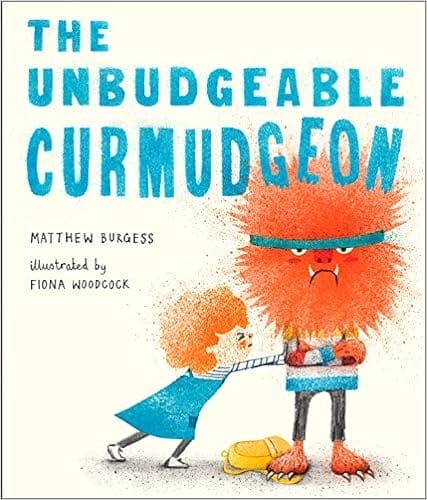
16. The Way I Feel by Janan Cain
The message here is that no feeling lasts forever and things are always changing. This book gives names to feelings and invites the reader to talk about what makes him or her feel that way.
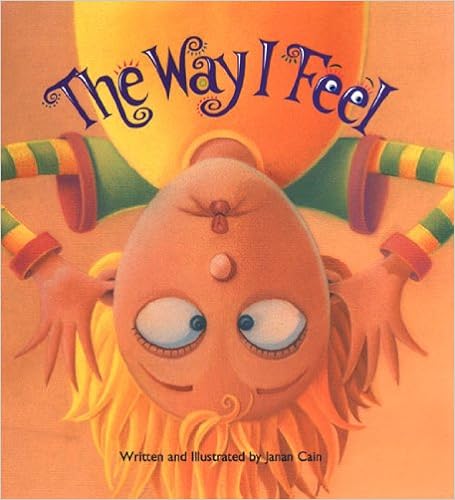
17. Grow Happy by Jon Lasser, PhD
Just like growing a garden, one can also cultivate happiness. The main character, Kiko, shows us how this book is grounded in positive psychology. For growing happiness, the tools include social support, good choices, and problem-solving skills.
The reader comes to understand that she has all the tools necessary to nurture her happiness.

18. Leaving Lymon by Lesa Cline-Ransome
In this picture book, the main character, Lymon, is being raised by his loving grandparents. He doesn’t remember much about his mother, and his father is incarcerated. He and his grandfather spend their summer nights playing the guitar together.
So many students will identify with the ambivalent feelings of Lymon, who loves his grandparents but definitely has questions about his situation.

19. Chrysanthemum by Kevin Henkes
Henkes is a prolific author whose writing speaks to children for a variety of reasons.
In this book, the main character, Chrysanthemum, adores her name. Why wouldn’t she? Her parents chose the name especially for her. When she finally gets to go to school, though, the experience isn’t all that she’d hoped for. Her peers are teasing her because of her beautiful and unique name. How will she handle this unexpected problem?
Great for the beginning of the year and building classroom community .

20. Diary of an Awesome Friendly Kid by Jeff Kinney
This spin-off of the Wimpy Kid series focuses on Rowley Jefferson, Greg’s best friend.
Rowley puts up with a lot from his so-called friend Greg, including lying and other bad behavior. Kinney’s writing is very entertaining for children and is also a nice opportunity to have conversations about what it truly means to be a good friend.

21. Out of My Mind by Sharon Draper
The story of a girl with cerebral palsy gives an inside look into what many students might miss about their peers with disabilities. Melody has a lot going on in her mind, but she can’t control her body to communicate those thoughts and feelings. The reality is all she wants is to be accepted by her peers and included in their activities.
Narrated by Melody, the story gives an inside view into how she sees the world around her and what others are missing when they can’t look past her wheelchair.

22. Millie Fierce by Jane Manning
This is a great book for students who might not stand up for themselves. The story of a wallflower named Millie who decides to get “fierce” is perfect for talking about so many great SEL topics.
Millie learns that fierce and mean aren’t the same, and while everyone needs a little bit of fierceness to stand up for themselves, it’s important not to take it too far.

23. No F its, Nilson! by Zachariah O’Hora
Another great book about being flexible and how to respond when things don’t go your way, No Fits, Nilson! is the story of a girl and her gorilla.
When things don’t go quite right, Nilson’s temper takes over and he throws a HUGE fit. While this book might not be needed for all students, it is a great opportunity to talk about big vs. small problems with those students who need it.

24. What Should Danny Do? School Day by Adir Levy
Remember the old Choose Your Own Adventure series? This book applies that format to help students see how their choices impact outcomes.
Throughout his school day, Danny is faced with several decisions on how he’ll react to certain situations.
This book has eight different endings, depending on the choices your students make as you read. Perfect for lessons on making positive choices.

25. Mustaches for Maddie by Chad Morris & Shelly Brown
While this chapter book is better suited for upper elementary students, I wanted to include it because it focuses on resilience and kindness in the face of challenges.
Maddie is a unique 12-year-old who loves to make people laugh with her fake mustaches. However, Maddie’s life is turned upside-down by an unexpected medical issue on top of having to deal with the class mean girl. Will Maddie be able to tackle both?
This book is based on a true story about the author’s daughter.

Looking for more great books for your classroom?
Finding novels and chapter books for your classroom can be challenging, especially with the limited time and budget most teachers are dealing with. Be sure to check out these articles to find even great books for your students.

Similar Posts

Best Books for 4th Graders: 20+ Favorites for Teachers & Homeschoolers

The 5 Key Components of Effective Reading Instruction

Differentiation for struggling readers: Here’s what you need to know

The Miraculous Journey of Edward Tulane Novel Study

Best Earth Day Books for Kids: 30 Inspiring Stories to Celebrate Our Planet

A Wrinkle in Time Novel Study Unit Your Learners Will Love
- Skip to main content
- Skip to primary sidebar
- Skip to footer
Need a resource? Head over to the shop and save 15% off your first purchase! SHOP NOW
- Text Messaging
- Facebook Group
- Search this website
Proud to be Primary
Be inspired, motivate kids, and make a positive impact in your classroom.

9:00 am By Proud to be Primary Leave a Comment
40+ Social Skills Books Every Elementary Teacher Needs
Social skills books teach kids about healthy and positive social behaviors to display with their peers. Reading aloud can help them understand appropriate social skills, build confidence, and give them tools for conflict resolution.

- Social Skills Books Kids Will Love
Imagine a young student, Sarah, who struggles with sharing. She often feels frustrated and doesn’t know how to express her feelings. Then, her teacher reads a book about a character who faces the same challenge. Through the story, Sarah understands why sharing matters and how to communicate her feelings better.
Like Sarah, students can learn essential social skills through stories that mirror their experiences. Social skills books are powerful tools for helping children develop the emotional intelligence needed for lifelong success.
Teaching social skills in early childhood is essential for helping kids navigate friendships , express emotions, and work with others. Social skills books offer a great way to guide children through these lessons, using relatable stories and examples they can understand. Through these books, kids can learn valuable life skills that will stick with them as they grow.
Table of contents
Empathy & kindness books, books that teach sharing, friendship, and cooperation, emotional regulation and self-contro l picture books, conflict resolution and problem solving books for kids, communication skills, inclusivity and acceptance social skills books, tips for using social skills books in the classroom, free sel book guide, sel book companion bundle, social stories bundle, more sel lessons for the classroom, types of social skills and book recommendations.
Social skills are the abilities that help children interact positively with others. These include communication, empathy, cooperation, and conflict resolution. Teaching these skills in the classroom is vital because it allows students to build relationships, work in teams, and manage emotions. These are skills they’ll need throughout life.
Books are a great way to introduce and reinforce social skills, using relatable characters and stories that make these concepts easy for young learners to understand and apply in real life. Invite students into other worlds to experience social settings and then encourage them to apply these experiences to their personal experiences.
Teaching children empathy skills helps them understand the feelings of others and the importance of being kind. Books abou t empathy and kindness can help students visualize and apply social settings to real-life scenarios. Here are some amazing titles to facilitate that learning.
Kindness is My Superpower by Alicia Ortego
This heartwarming story teaches children how small acts of kindness can significantly impact others. Through relatable examples, kids learn the importance of empathy and understanding and how to be a positive force in the world.

We All Belong by Nathalie Goss
This beautifully illustrated book celebrates diversity, helping young readers understand that differences make us unique and special. Through a fun rhyming story, children are encouraged to embrace inclusion and acceptance.

The Invisible Boy by Trudy Ludwig
This touching story follows Brian, a boy who feels invisible in his classroom until a new friendship helps him find his place. It introduces kids to the themes of loneliness, inclusion, and the power of kindness.

Have You Filled a Bucket Today? by Carol McCloud
This engaging book uses the bucket metaphor to explain how positive actions and words “fill” the emotional buckets of others and ourselves. It’s a fun, simple way to teach children about kindness, empathy, and emotional well-being.

How Full is Your Bucket? by Tom Rath and Mary Reckmeyer
This children’s version of the popular concept shows how our actions affect others’ emotional “buckets” and how we can fill or deplete them. The story encourages kids to focus on positive behavior and its impact on the people around them.

I am Human by Susan Verde
This book explores the many emotions and imperfections that make us human through beautiful illustrations. It encourages young readers to embrace compassion, understanding, and the idea that mistakes help us grow.

Teach Your Dragon Empath y by Steve Herman
This fun and educational story follows a dragon learning how to understand and share the feelings of others. It offers an excellent way for children to grasp the concept of empathy through engaging, relatable scenarios.

The power of collaboration will shine through as students understand how to share and make friends easily. Improve their sharing and cooperation skills to bu ild classroom community . They will appreciate that you taught them about cooperation and teamwork ! Continue reading to learn more about titles that encourage sharing and friendship.
The Rainbow Fish by Marcus Pfister
This classic story follows the journey of a beautiful fish who learns that sharing his shimmering scales brings him more joy than keeping them all to himself. The book teaches children the importance of sharing and the value of friendship.

The Most Magnificent Thing by Ashley Spires
This inspiring story follows a young girl who sets out to build the most magnificent thing, only to face frustration when it doesn’t turn out as planned. Through perseverance and creativity, she learns the value of patience, problem-solving, and never giving up, offering an essential message about resilience and growth.

Stick and Stone by Beth Ferry
This charming story follows the unlikely friendship between Stick and Stone, who discover how friends can support and help each other in times of need. Through simple rhymes and fun illustrations, the book emphasizes the power of friendship, kindness, and standing up for one another.

Should I Share My Ice Cream by Mo Willems
Elephant Gerald faces a dilemma when he debates whether to share his ice cream with his best friend, Piggie. This silly and relatable story emphasizes the joy of sharing and considering others’ feelings.

The Little Red Hen by Paul Galdone
In this retelling of the classic tale, the Little Red Hen asks her friends for help but receives none, only to have them want to share in the rewards. The story teaches children the importance of cooperation and working together.

The Mine-O-Saur by Sudipta Bardhan-Quallen
The Mine-o-saur always takes things from others and refuses to share, but soon learns that having toys doesn’t mean much without friends. This fun story addresses the importance of sharing and cooperation.

The Not so Friendly Friend by Christina Furnival
This book is a great way to show children how to express their feelings and form meaningful relationships with other kids. It encourages being helpful instead of hurtful!

There are so many fun books that teach kids about emotions. These lessons about emotions can help them ex plore and understand their feelings. Every child has big feelings, so use feelings books to guide them and stay calm. Use these stories to get started.
When Sophie Gets Angry – Really, Really Angry by Molly Bang
Sophie learns to manage her anger healthily when her emotions become overwhelming. This beautifully illustrated book helps children understand and cope with big feelings.

My Mouth is a Volcano by Julia Cook
Louis has trouble controlling his outbursts and interrupts others until he learns how to manage his impulses better. The story teaches children the importance of patience and self-control when speaking.

What Should Danny Do? by Ganit and Adir Levy
Danny’s day unfolds based on the reader’s choices, teaching kids how their decisions impact their emotions and outcomes. It’s a fun, interactive way to explore self-control and the consequences of actions.

No, David! by David Shannon
David frequently misbehaves, but the story gently shows the value of learning from mistakes and developing self-control. It’s a lighthearted book that addresses boundaries and emotional regulation.

Soda Pop Head by Julia Cook
This story follows Lester, who has a quick temper and is described as a “soda pop head” when he gets upset. The book provides children with practical strategies for managing anger and calming down.

A Little Spot of Anger by Diane Alber
This engaging story helps children recognize and manage their feelings of anger by visualizing it as a small “spot” they can control. It offers simple strategies for calming down and teaches kids how to handle their emotions healthily.

The Color Monster: A Book of Feelings by Anna Llenas
In this beautifully illustrated pop-up book, the Color Monster learns to understand his emotions by sorting them into different colors. This creative and fun activity helps children identify and express their feelings, promoting emotional regulation.

Give kids the tools to resolve conflicts and think through consequences using problem-solving read-alouds . Teaching conflict resolution will give them confidence as they encounter challenging situations. Grab some of these titles to help with conflict resolution!
Enemy Pie by Derek Munson
A young boy learns how to turn an “enemy” into a friend with his dad’s secret “enemy pie” recipe. This heartwarming story teaches problem-solving and conflict resolution through kindness.

What If Everybody Did That? by Ellen Javernick
This thought-provoking book explores the consequences of small, careless actions, like littering or cutting in line, and asks readers to imagine what would happen if everyone behaved that way. Engaging scenarios teach children the importance of personal responsibility and how their actions affect others.

The Berenstain Bears Get in a Fight by Stan and Jan Berenstain
Brother and Sister Bear get into a big fight over something small but soon realize how their argument affects their relationship. Through their journey, they learn the importance of resolving conflicts peacefully and the value of apologizing and forgiving.

The Recess Queen by Alexis O’Neill
Mean Jean rules the playground until a new girl, Katie Sue, arrives and changes the dynamic with kindness and friendship. The story illustrates how conflict can be resolved without aggression and through compassion.

The Pigeon Finds a Hot Dog! by Mo Willems
In this delightful story, the ever-enthusiastic Pigeon encounters a hungry Duck who wants to share a hot dog. The book explores friendship, sharing, and communication themes through their humorous interaction, highlighting how friends can learn from each other and enjoy moments together.

Llama Llama Time to Share by Anna Dewdney
Llama Llama faces a sharing problem when a new friend plays with his favorite toy. This charming book teaches children how to resolve conflicts by sharing and compromising.

How to Be a Friend by Laurie Krasny Brown and Marc Brown
This straightforward guide explains how to handle everyday conflicts with friends, offering strategies for staying calm, discussing issues, and finding solutions. It’s a helpful tool for teaching kids peaceful conflict resolution.

Communication skills are essential throughout life. Teach kids early using thoughtful friendship lessons and encourage them to communicate with their peers and families. Effective communication, including listening and speaking, will help students immensely. Here. are some fun books about communication.
Words Are Not for Hurting by Elizabeth Verdick
This book teaches children the power of words and how to use them kindly. It helps young readers understand that words can heal or harm and encourages positive communication.

Listen and Learn by Cheri J. Meiners
This helpful book teaches young children the importance of listening attentively and following directions daily. Through simple language and relatable examples, it emphasizes how listening and paying attention help build good relationships and promote effective learning.

I Have a Little Problem, Said the Bear by Heinz Janisch
In this charming story, a bear tries to communicate his problem, but everyone he encounters is too busy offering their solutions to listen truly. The book highlights the importance of listening carefully to others and understanding their needs before responding, making it a great lesson in effective communication.

Howard B. Wigglebottom Learns to Listen by Howard Binkow
Howard struggles with listening but soon learns that things go better when he pays attention to others. The book emphasizes the importance of active listening and respectful communication.

Don’t Let the Pigeon Stay Up Late! by Mo Willems
This humorous story features a persuasive pigeon trying to talk his way into staying up late. It teaches children how to communicate their wants and needs (and when to listen to others). It’s a playful way to approach conversation and negotiation.

Interrupting Chicken by David Ezra Stein
Little Chicken can’t stop interrupting her dad’s bedtime stories but eventually learns why listening and letting others speak is essential. The story illustrates how communication involves both talking and listening.


We Are (Not) Friends by Anna Kang
This book helps young children understand how to communicate their feelings and needs with friends, new and old. Effective communication allows kids to make new friends and respect their old ones.

Teach kids about the value of diversity and welcoming differences in the classroom. Use social skills picture books to illustrate how impactful it can be to accept everyone, no matter what! These books about inclusion are the perfect way to start any lesson about social skills . Here are some great books that teach kids about inclusion.
Strictly No Elephants by Lisa Mantchev
When a boy and his pet elephant are excluded from a pet club, they create their inclusive group. This sweet story shows how important it is to embrace differences and include everyone.

All Are Welcome by Alexandra Penfold
This uplifting book shows children from diverse backgrounds and cultures welcoming them to a school where everyone belongs. It celebrates diversity and inclusion in the classroom and community.

The Big Umbrella by Amy June Bates
A big umbrella provides shelter for everyone, regardless of size, shape, or appearance. The story offers a beautiful message of inclusivity, acceptance, and kindness.

We’re All Wonders by R.J. Palacio
Based on the novel Wonder , this story focuses on Auggie, a boy who looks different but shows readers the importance of kindness and accepting others for who they are. It promotes empathy and inclusion for children of all abilities.

The Day You Begin by Jacqueline Woodson
This beautifully written book encourages children to embrace their unique qualities, even when they don’t fit in. It’s a touching story about diversity, acceptance, and finding the courage to connect with others.

Red: A Crayon’s Story by Michael Hall
This clever and touching story follows a blue crayon mistakenly labeled as red who struggles to fit in with others’ expectations. The crayon learns to embrace its true identity through self-discovery, teaching children about acceptance, self-expression, and celebrating differences.

Same, Same But Different by Jenny Sue Kostecki-Shaw
This beautifully illustrated book tells the story of two boys from different parts of the world who become pen pals and discover much in common despite their various lives. It’s a heartwarming celebration of diversity and the universal experiences that connect us all.

Social skills lessons can be incorporated into daily lessons and activities with just a few spare minutes. Add social skills books to your morning routines to start the day right. Kids will learn essential social skills quickly if they have a book to focus on each week or every few days. They’re perfect for morning meetings or circle times to tie a lesson together or to start a discussion.
Each social skill is something kids have most likely gone through themselves. After reading a story, have students consider a time they encountered something similar. They can talk with their peers, or you can hold a class discussion. Turn it into a writing piece for an extension of the activity.
You don’t have to set aside too much time to work on social skills. Give yourself about ten minutes daily to focus on a skill, read a social skills book, and drive it home for students. Through plenty of repetition, fun books, and engaging activities, kids will begin applying what they have learned to their everyday lives.
Resources to Help You Teach Social Skills
Grab this FREE Social Emotional learning book list that includes done-for-you social skills books lists on many important topics! This book list will make planning your SEL lessons easier with many suggestions for your read aloud time.
Click the image below to grab a copy.
Try the SEL Book Companion Bundle by Proud to be Primary. It includes 40+ books that cover SEL topics. There are anchor charts, detailed lesson plans, writing prompts, Google Slides, follow-up activities and more for each story.

The Social Stories Bundle is a great addition to your SEL lessons as well. Try it out! There are 20 different mini readers to teach kids important social skills that they can apply to their lives.

self esteem activities

self regulation lessons

friendship skills in elementary
PIN for Later

FREE Social Emotional Learning Email Series
Sign up for the social emotional learning email course filled with tips to get you started, lesson and activity ideas, PLUS tons of FREE resources you can access right away. Everything you need to teach social skills and emotional literacy in the classroom!
Success! Now check your email to confirm your subscription. Stay tuned for the social-emotional learning email series coming your way soon! -Elyse
There was an error submitting your subscription. Please try again.
I'd like to receive the free email course.
You may also enjoy these posts:

Reader Interactions
Leave a comment cancel reply.
Your email address will not be published. Required fields are marked *
Notify me of follow-up comments by email.
- Privacy Policy
- Terms & Conditions
- Shop Our Site
- Social-Emotional learning
- Classroom Management
- Teaching Ideas
- Directed Drawing
- Best-Sellers
- Social-Emotional Learning
- Sight Words
- Non-Fiction
Join more than 100,000 proud primary teachers!
Sign up for exclusive access to teacher freebies & weekly emails filled with teacher tips, lesson ideas, and resource suggestions sent straight to your inbox!

- Grades 6-12
- School Leaders
Don’t Miss Our List of the Top 2024-25 Competitions for Students in Grades K-12! 🏆
Every product is independently selected by our team of teacher-reviewers and editors. Things you buy through our links may earn us a commission.
54 Best Social Skills Books for Kids
Each book starts an important conversation.
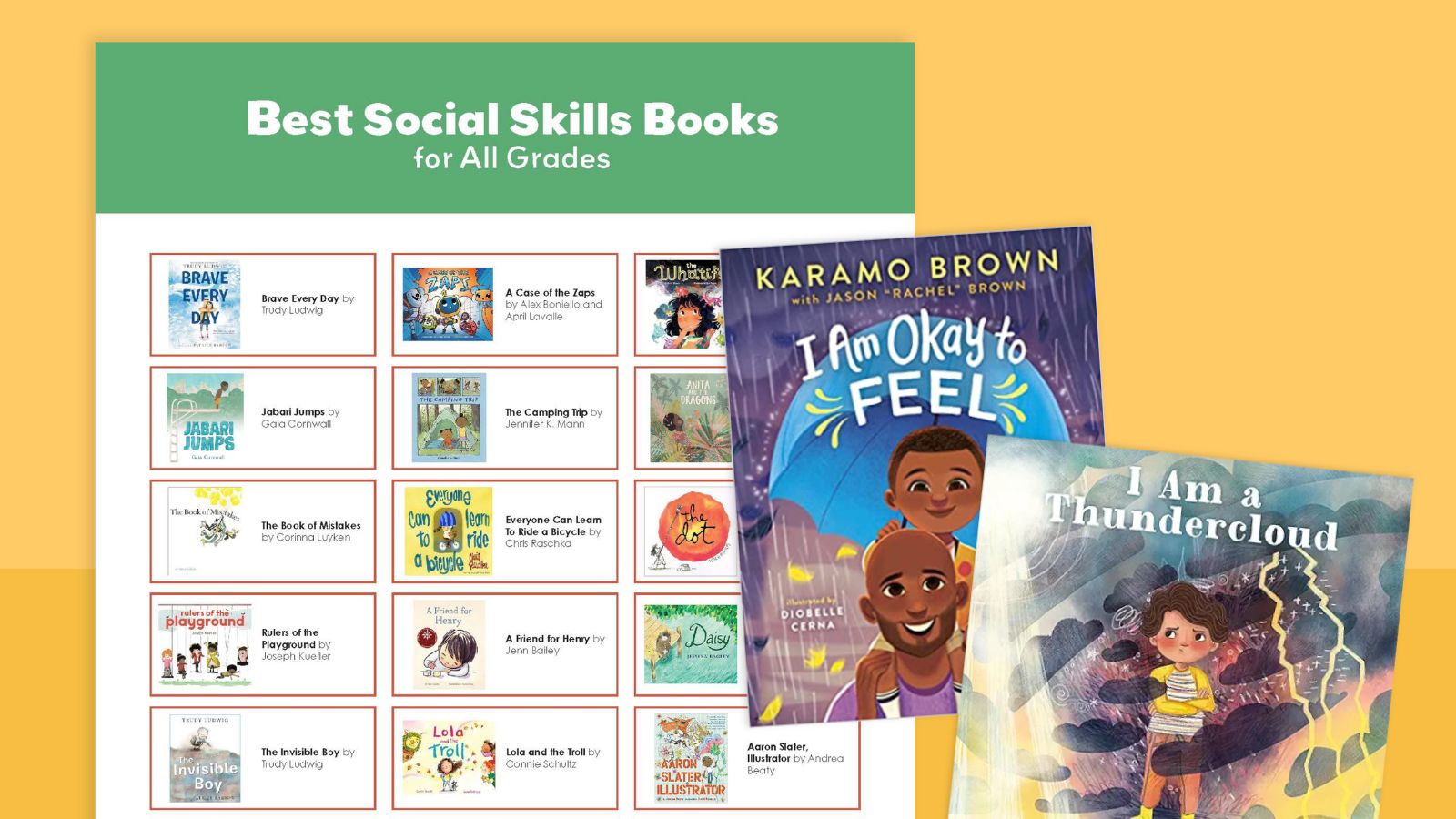
Social-emotional learning encompasses skills like managing emotions, making friends, empathy, and understanding. They’re skills that will help students succeed and can be taught using these amazing social skill books for kids, including recent releases you may not have seen yet. These books are fantastic for starting classroom conversations about all kinds of SEL skills.
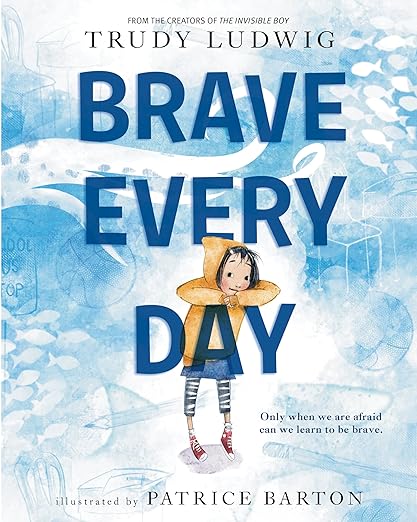
1. Brave Every Day by Trudy Ludwig
Camila and Kai are both scared about their class’ field trip to the aquarium, though they show it in different ways. It turns out that supporting each other helps them both.
This story is perfect to talk about new experiences and how we all show feelings differently.
Buy it: Brave Every Day
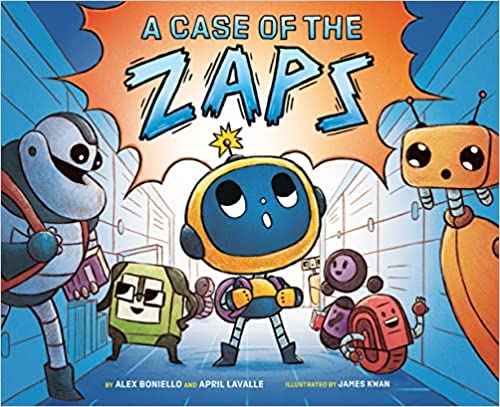
2. A Case of the Zaps by Alex Boniello and April Lavalle
Robot Pi’s class is planning a class trip to “where it all started, Olde Silicon Valley.” (Ha!) It’s supposed to be exciting, but Pi’s worries quickly kick into “overdrive.” The fun robot metaphors give kids helpful language for talking about anxious feelings. Bonus: We appreciate the incidental use of they/them pronouns for the main character!
Buy it: A Case of the Zaps

3. The Whatifs by Emily Kilgore
Scary “Whatifs” follow Cora everywhere, and it only gets worse as she prepares for her big piano recital. Her outlook changes when Stella challenges her to turn her bad Whatifs into good ones. This is a great book to read one-on-one with an anxious student, or as a read-aloud to help your class understand what anxiety feels like.
Buy it: The Whatifs

4. Jabari Jumps by Gaia Cornwall
Jabari is definitely ready to jump off the diving board. He’s finished his swimming lessons and passed his swim test, and he’s a great jumper, so he’s not scared at all. Jabari Jumps is a wonderful book to talk about how it feels to try something new, and how to reframe scary experiences into something positive.
Also check out the sequel Jabari Tries to talk about perseverance!
Buy it: Jabari Jumps

5. The Camping Trip by Jennifer K. Mann
Ernestine is super excited to go camping for the first time with her aunt and cousin—until they reach the campsite, that is. Then everything feels scary, and she misses her dad. Use this book as a read-aloud to talk about new experiences and how to deal with big feelings, like missing a parent.
Buy it: The Camping Trip

6. Anita and the Dragons by Hannah Carmona
Fear of “dragons” almost overcomes Anita as she and her family prepare to emigrate from their home in the Dominican Republic. Her brother reminds her, “They aren’t real dragons. They’re just planes in the sky.” We love this book because of its ability to build empathy for others’ experiences, and to talk about how we handle fear.
Buy it: Anita and the Dragons

7. The Book of Mistakes by Corinna Luyken
Zoom meets Beautiful Oops! in this book about the creative process and the way in which “mistakes” can blossom into inspiration. Use this book to start the school year when you want students to get right into a growth mindset, or break it out when you see students getting frustrated with a project.
Buy it: The Book of Mistakes

8. Everyone Can Learn To Ride a Bicycle by Chris Raschka
Learning to ride a bike is one of the most important milestones of childhood, and this book captures the emotional ups and downs of the experience. With younger students, use this book to talk about the feelings we experience when learning. For older students, use riding a bike as a metaphor for learning.
Buy it: Everyone Can Learn To Ride a Bicycle
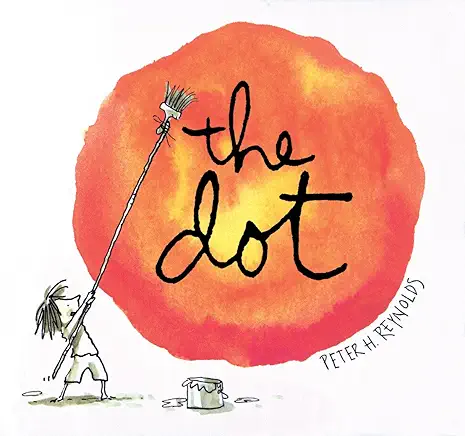
9. The Dot by Peter Reynolds
The words of her teacher are a gentle invitation to express herself. But Vashti can’t draw—she’s no artist. Use this text to get students thinking about the ways they can express themselves, and even make your own dots.
Buy it: The Dot

10. Rulers of the Playground by Joseph Kuefler
One morning, Jonah decided to become ruler of the playground. Everyone agreed to obey his rules to play in King Jonah’s kingdom … everyone except for Lennox, because she wanted to rule the playground too.
Read this book to reinforce playground etiquette and to help students navigate friendships in unstructured spaces.
Buy it: Rulers of the Playground
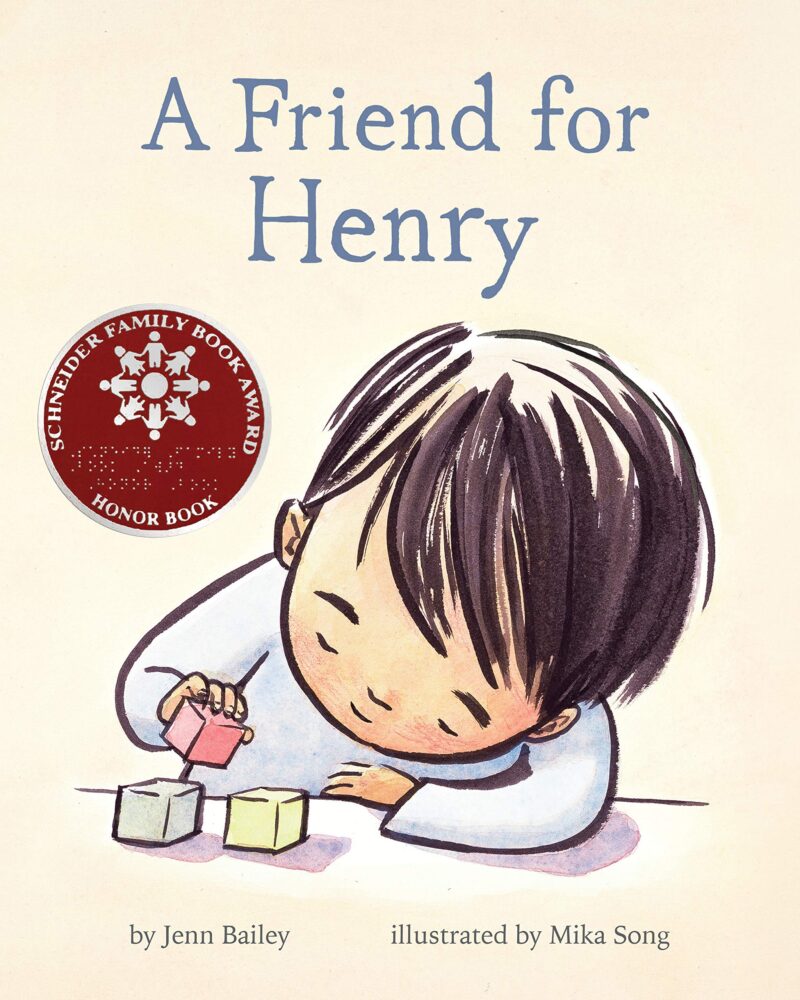
11. A Friend for Henry by Jenn Bailey
Henry, who has autism, eagerly wants a new friend. But many of his classmates aren’t quite the perfect fit he imagines. Then he builds blocks with Katie, and their tower is just right.
This book is about friendship and neurodiversity and can be used to help students empathize with others and learn friendship-building skills.
Buy it: A Friend for Henry
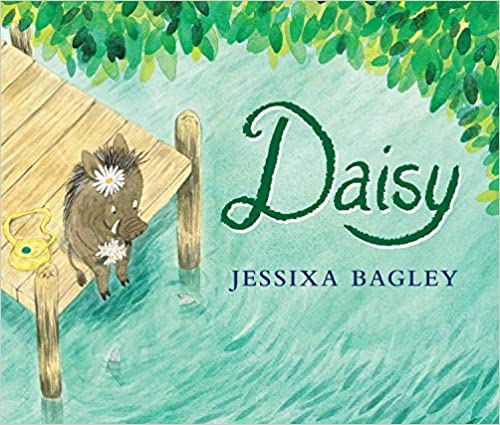
12. Daisy by Jessixa Bagley
Teasing makes Daisy feel terrible. She spends much of her time alone, collecting treasures—until she realizes someone else is adding to her treasure shelf.
Have students create their own treasure shelves after they read this story and think about what makes them special no matter what happens.
Buy it: Daisy
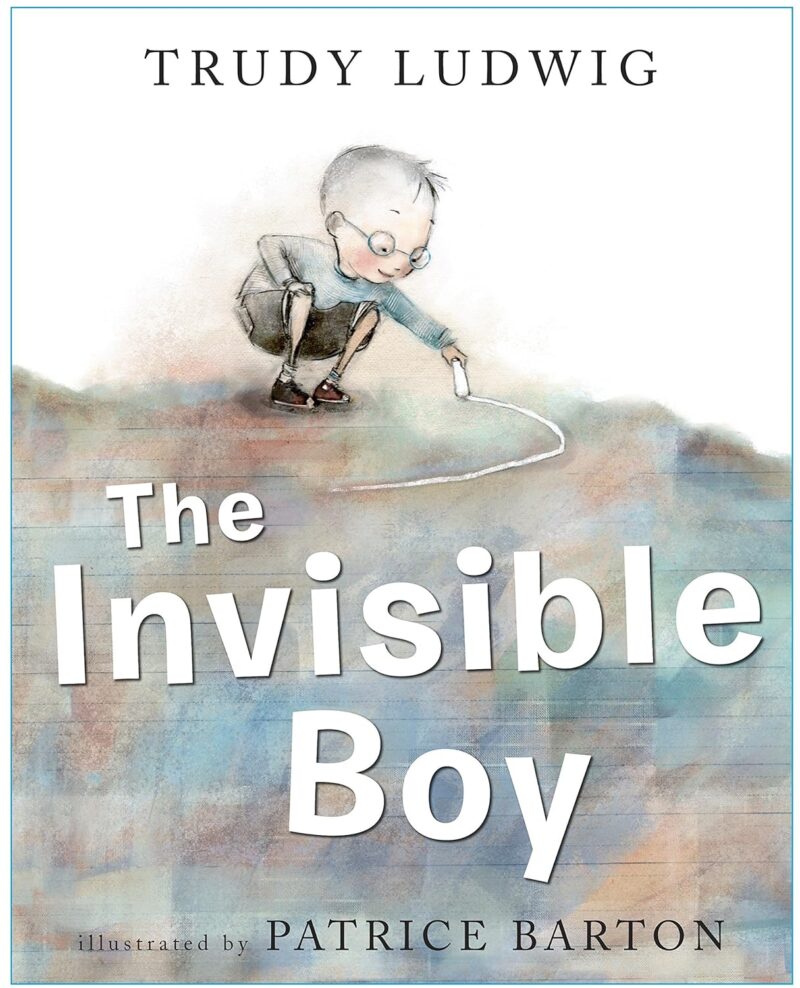
13. The Invisible Boy by Trudy Ludwig
Meet Brian, the invisible boy. Nobody ever seems to notice him or think to include him in their group, game, or birthday party … until a new kid comes to class.
Use this book to talk about how our actions make others feel and how small actions add up (notice how the illustrations change as Brian is more and more included).
Buy it: The Invisible Boy
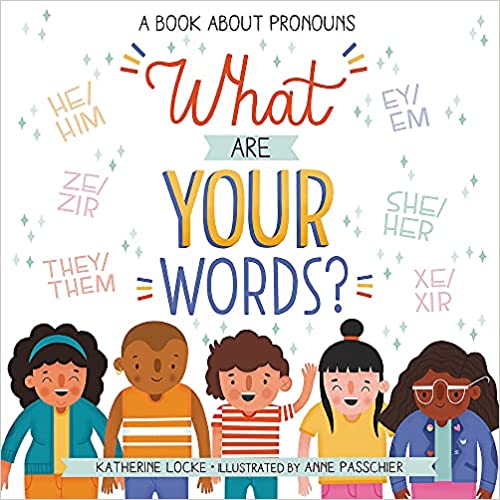
14. What Are Your Words? A Book About Pronouns by Katherine Locke
This is one of our favorite social skills books for kids for supporting developmentally appropriate conversations about pronoun choices. Let kids know they have options for the words that feel right—and that it’s important to respect others’ choices too.
Use this book to introduce the idea that words have power, or have it on hand if students are curious about pronouns.
Buy it: What Are Your Words? A Book About Pronouns

15. Aaron Slater, Illustrator by Andrea Beaty
We love all the Questioneers books to use as engaging class read-alouds, but this one is especially awesome for talking about strengths, challenges, and finding your own way to shine. Aaron Slater has a tough time writing a story to share in class, until he lets his love of art lead the way.
Start a conversation about neurodiversity, create your own personal stories, or talk about things that are difficult for each of us and how we work through them.
Buy it: Aaron Slater, Illustrator

16. Like by Annie Barrows and Leo Espinosa
This quirky ode to human connection is a fun way to launch conversations about similarities and differences. How are humans like mushrooms, excavators, and hyenas?
Use this book to talk about how we’re similar. Or, with older kids, get creative thinking about other out-of-the-box ideas to add to this text. We love social skills books for kids that get classrooms talking and wondering together!
Buy it: Like

17. Those Shoes by Maribeth Boelts
All Jeremy wants is a pair of those shoes, the ones everyone at school seems to be wearing. Though Jeremy’s grandma says they don’t have room for “want,” just “need,” when his old shoes fall apart at school, he is more determined than ever to have those shoes, even a thrift-shop pair that is much too small.
This book is great for talking about wants and needs, or to discuss how we develop and act on empathy.
Buy it: Those Shoes

18. Home Is in Between by Mitali Perkins
If you’re looking for social skills books for kids related to code-switching—navigating multiple cultures—Shanti is a positive role model for students. When she and her family move to the United States from India, the worlds inside her home and in the larger community feel very different.
Start a discussion with students about how we act in different settings and you may be surprised with how reflective students can be.
Buy it: Home Is in Between
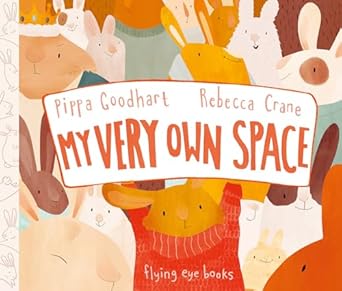
19. My Very Own Space by Pippa Goodhart and Rebecca Crane
A little rabbit is trying to read his book in peace, but there’s so much going on around him! Maybe he needs some space just for himself.
This is a great book to introduce the concept that we all need personal space and appropriate ways to ask for it.
Buy it: My Very Own Space
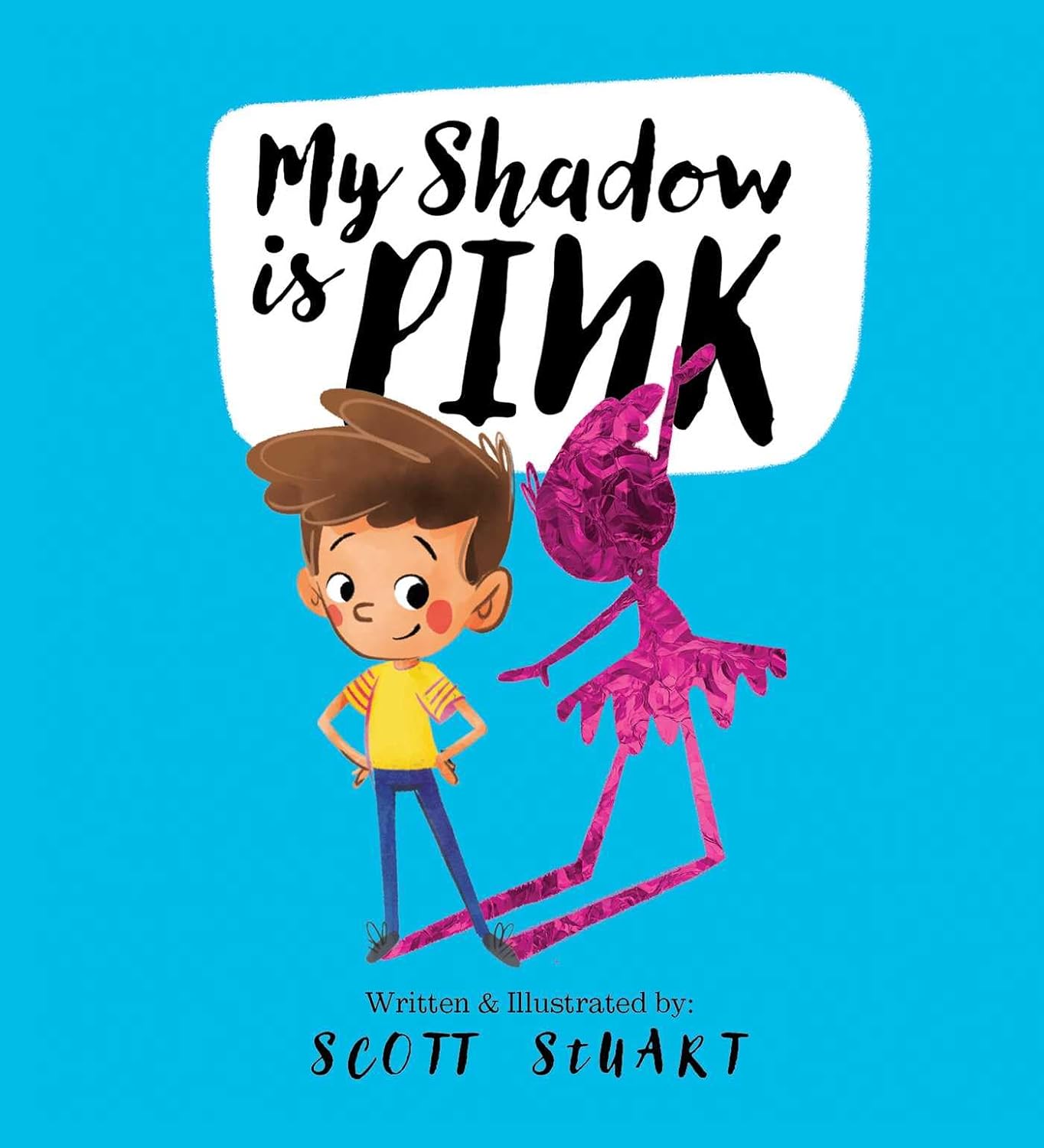
20. My Shadow Is Pink by Scott Stuart
This child’s family is sure his shadow is blue, but it’s not—it’s pink. And the shadow loves dresses and dancing, and it definitely wants to be seen as it really is.
Engage students in conversation about how others see them and how they want to be seen.
Buy it: My Shadow Is Pink
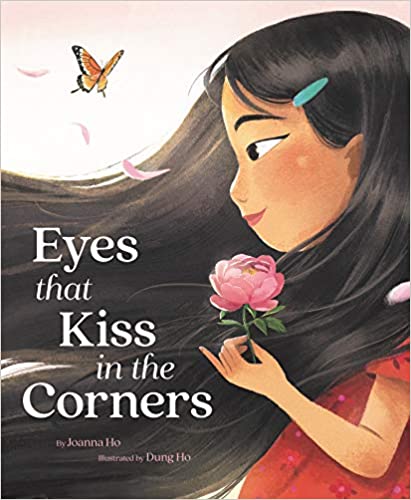
21. Eyes That Kiss in the Corners by Joanna Ho
This young girl is intensely proud of her “eyes that kiss in the corners and glow like warm tea.” She also loves that her sister, mother, and grandmother all share the same special feature.
Start a conversation about qualities that are unique about each student, and how they can embrace their uniqueness. With older students, talk about what they appreciate about their family culture.
Buy it: Eyes That Kiss in the Corners

22. Sophie’s Squash by Pat Zietlow Miller and Anne Wilsdorf
When Sophie gets a squash that quickly becomes her best friend, she has to adapt when the squash starts to become, well, squishy. Use this fun story to talk about friendships and how life can change for the better when it’s time to move on.
Buy it: Sophie’s Squash
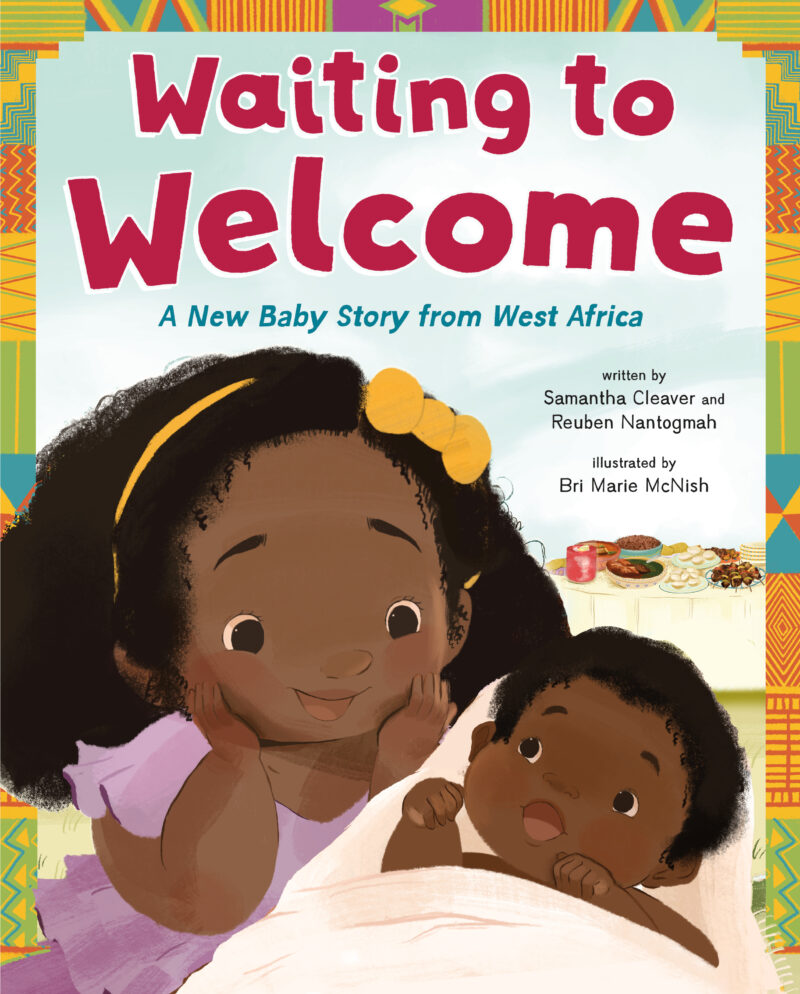
23. Waiting To Welcome by Reuben Nantogmah and Samantha Cleaver
In this West African story, Andani waits to welcome a new baby cousin. The story about waiting is helpful for students who need to learn how to wait, and it’s infused with West African culture and traditions.
Buy it: Waiting To Welcome
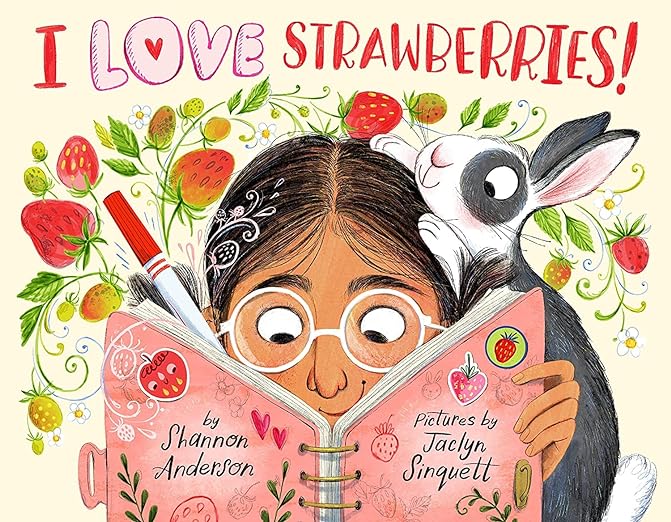
24. I Love Strawberries! by Shannon Anderson
Jolie desperately wants to grow strawberry plants in the family garden, but her parents aren’t on board. She takes on the challenges of convincing them she’s responsible enough, earning money to buy plants, and caring for the plants once she plants them. This is a good one for talking about how achieving a goal can include lots of different challenges along the way.
This book is the perfect companion to a unit on gardening, with themes of responsibility and ownership.
Buy It: I Love Strawberries!
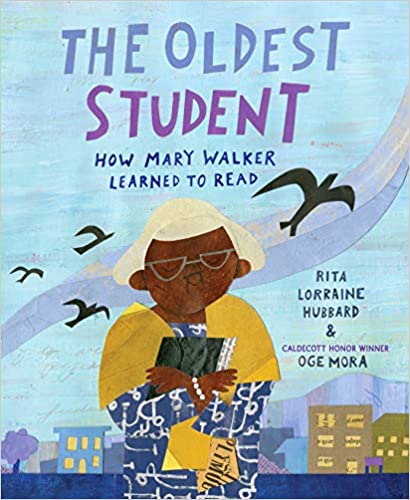
25. The Oldest Student: How Mary Walker Learned To Read by Rita Lorraine Hubbard
Mary Walker was born a slave and persevered through challenges her entire life. At age 114, she finally fulfilled her lifelong dream of learning to read. She’s an inspiration, and her story is a wonderful one to inspire students to try something new and to talk about how we are never too old to learn something new.
Buy it: The Oldest Student: How Mary Walker Learned To Read
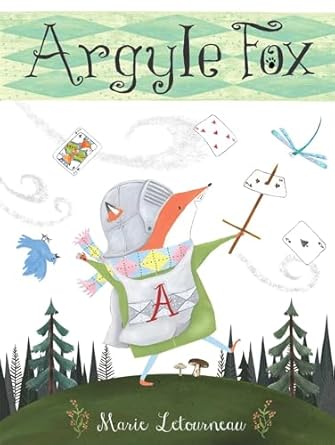
26. Argyle Fox by Marie Letourneau
Argyle Fox, with his signature style, wants to play outside on a springtime day, but the wind is wreaking havoc with his fun and games. As soon as he builds a card tower, climbs into a giant spiderweb, or takes up his pirate sword, here comes the wind, woosh!
This story is perfect for talking about being flexible when plans change and overcoming challenges.
Buy it: Argyle Fox
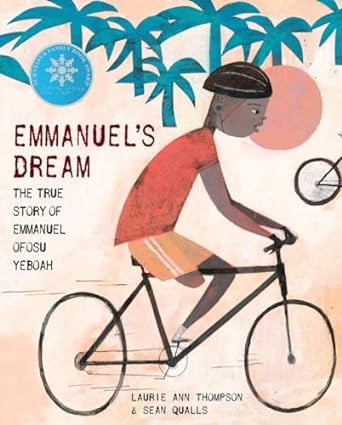
27. Emmanuel’s Dream: The True Story of Emmanuel Ofosu Yeboah by Laurie Ann Thompson
Emmanuel Ofosu Yeboah’s inspiring true story is nothing short of remarkable. Born in Ghana, West Africa, with one deformed leg, he was dismissed by most people—but not by his mother, who taught him to reach for his dreams.
A story of persistence, you can also map Emmanuel’s route, write about advocating for people with physical disabilities, and talk about how motivation impacts our success.
Buy it: Emmanuel’s Dream: The True Story of Emmanuel Ofosu Yeboah

28. Life by Cynthia Rylant
There are so many wonderful things about life, both in good times and in times of struggle. This text is a great starting point to talk about optimism and hope.
Buy it: Life

29. A Small Kindness by Stacy McAnulty
Add this to your social skills books for kids to encourage kindness in the classroom. Simple text and sweet illustrations show a diverse class spreading kindness from one person to another in lots of doable ways.
After you read the story, record the ways that kids can be kind to one another and around your school.
Buy it: A Small Kindness

30. John’s Turn by Mac Barnett
When it’s John’s turn to perform at the school assembly, he’s nervous, but his love for dancing gives him confidence. His classmates cheer him on. This is one of our new favorite social skills books for kids to talk about encouraging others and giving each person their turn to shine.
Use this story to start a conversation about your students’ unique gifts, how you feel when you are presenting something new, and how to approach it when someone has a very specific interest.
Buy it: John’s Turn
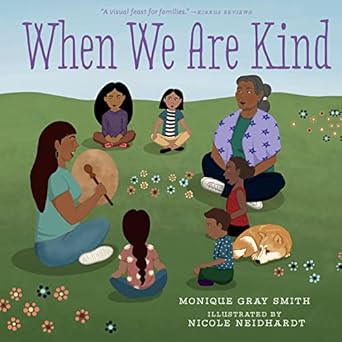
31. When We Are Kind / Nihá’ádaahwiinít’íigo by Monique Gray Smith
This bilingual English and Diné book uses art inspired by Navaho culture to show how simple kindnesses have a lasting impact. It would be lovely inspiration for a kindness-themed class book or bulletin board.
We love the simple yet powerful story and how it’s infused with Navaho culture.
Buy it: When We Are Kind / Nihá’ádaahwiinít’íigo

32. The Smile Shop by Satoshi Kitamura
Disappointment washes over a small boy when he drops the money he’s saved down the drain. A stranger in a photography studio chooses to make an unexpectedly kind gesture.
Buy it: The Smile Shop
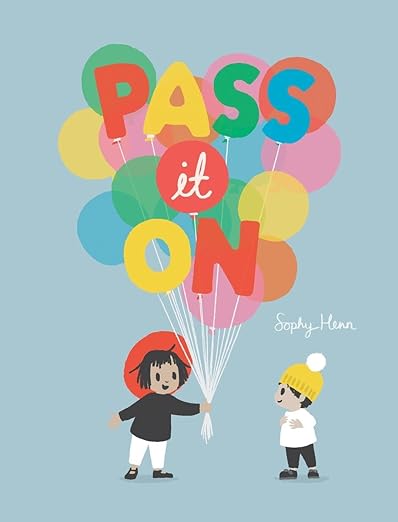
33. Pass It On by Sophy Henn
When you see something terrific, smile a smile and pass it on! If you chance upon a chuckle, hee-hee-hee and pass it on. Should you spot a thing of wonder, jump for joy and pass it on!
After you read this book, start a chain of balloons showing what your students passed on—smiles, laughter, knowledge, and on and on.
Buy it: Pass It On
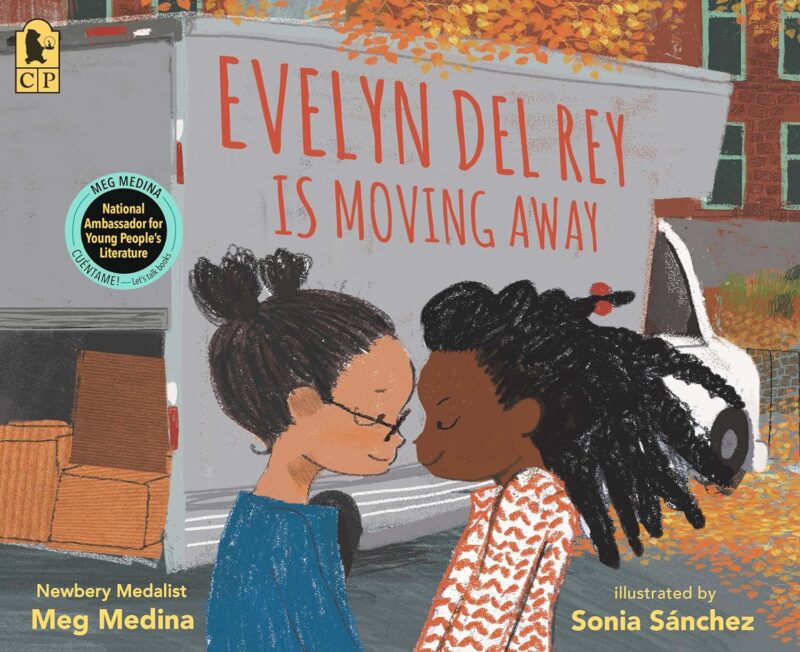
34. Evelyn Del Rey Is Moving Away by Meg Medina
Equal parts affirming and hopeful, if you need social skills books for kids to help cope with a friend moving, this is the one. Daniela can’t believe Evelyn won’t live across the street anymore. But focusing on cherished memories and keeping in touch helps her manage.
We love how honest and true this story is. It can be incorporated into a discussion about moving on, or if a student moves away mid-year.
Buy it: Evelyn Del Rey Is Moving Away

35. The Circles in the Sky by Karl James Mountford
This folktale stars Fox, who wonders about a dead bird in the forest. The book gives classrooms an inclusive and gentle way to talk about death.
Buy it: The Circles in the Sky
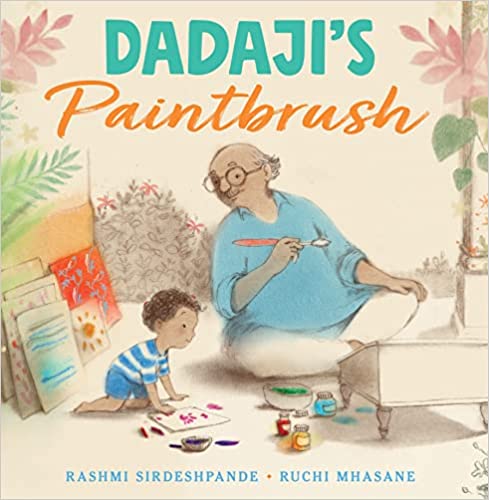
36. Dadaji’s Paintbrush by Rashmi Sirdeshpande
A boy and his grandfather connect through painting. When the grandfather dies, the boy can’t face his art for a long time. Finally, painting again helps him heal.
This is a wonderful story to read with a student who is going through grief.
Buy it: Dadaji’s Paintbrush
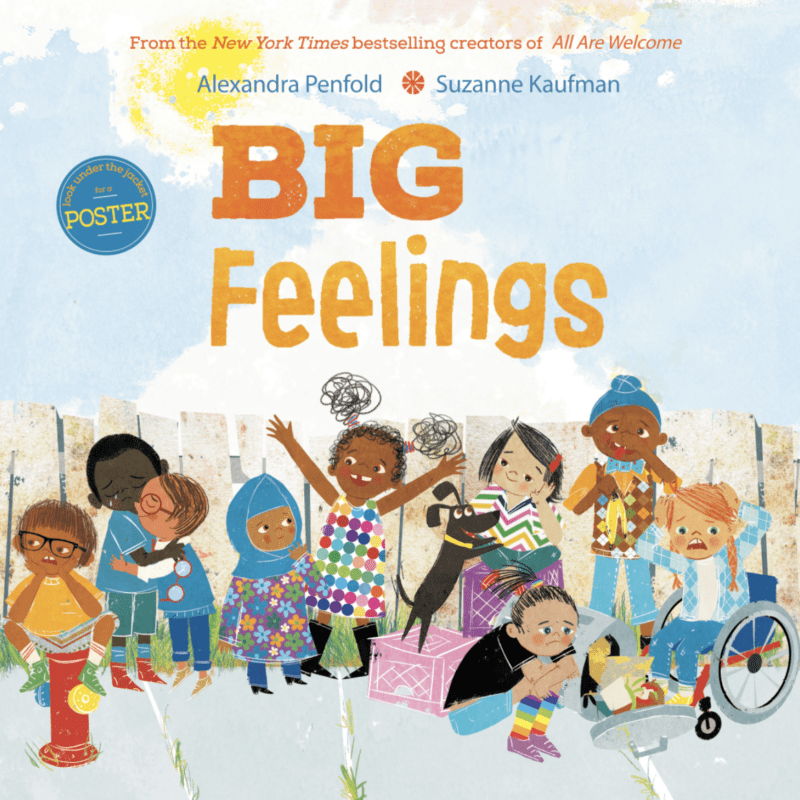
37. Big Feelings by Alexandra Penfold
An energetic group of young friends has big plans for the day—until big, hard feelings get in the way. It’ll take talking about it and being flexible to get the day back on track.
Use this text to talk about the big feelings students experience and how to handle them.
Buy it: Big Feelings

38. I Am Okay To Feel by Karamo Brown
A boy and his dad walk and talk about their feelings. We love how positive and relatable this book is for kids. Well-researched back matter gives adults lots of tools for talking with children about emotions too.
Buy it: I Am Okay To Feel
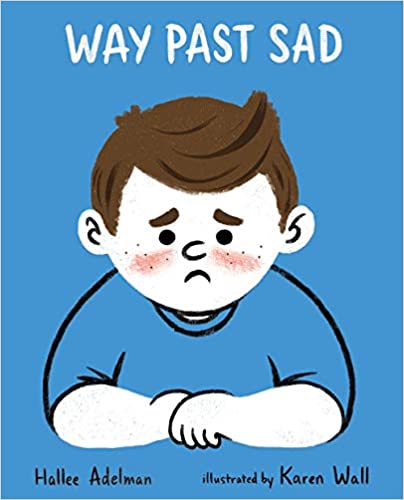
39. Great Big Feelings series by Hallee Adelman
These are invaluable social skills books that normalize big emotions for kids. Each book shares a relatable experience from a kid’s perspective and ends with a positive coping strategy. These are also great examples of personal narrative writing (with details about feelings!).
Buy it: Way Past Afraid and Way Past Sad
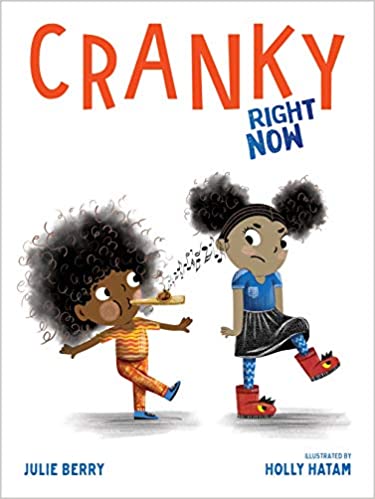
40. Cranky Right Now by Julie Berry
“I’m cranky right now and I have my reasons,” says this main character. Bad moods happen to all of us. Get kids talking about how to sit with grouchy feelings and let them pass.
Read this before students have a cranky day so you can refer back to it and discuss how they can be cranky right now.
Buy it: Cranky Right Now

41. Ruthie and the (Not So) Teeny Tiny Lie by Laura Rankin
Ruthie loves little things—the smaller, the better. So when she finds a teeny tiny camera on the school playground one afternoon, she can hardly believe her luck. She wants to keep the camera in the worst way, but there’s one little problem: It isn’t hers.
This is a great book to talk about how to handle honesty that gives students a way to think about being honest even when it’s hard.
Buy it: Ruthie and the (Not So) Teeny Tiny Lie
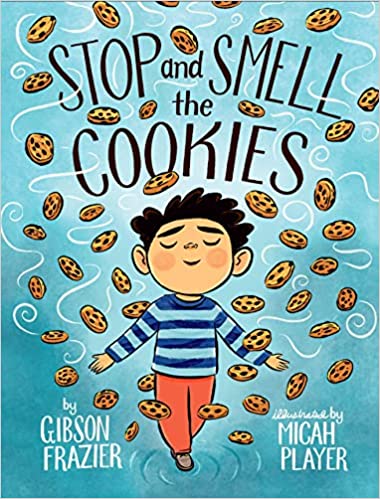
42. Stop and Smell the Cookies by Gibson Frazier
If you’re looking for a new social skills book for kids that tackles managing impulsivity in a positive and empathetic way, you need this one! Dash Gordon has big ideas, good intentions … and a hard time reining himself in. When he’s feeling down about having a tough day, his mom helps him learn a mindful breathing routine that really helps.
Introduce mindfulness, breathing, and being present with this story. Then, have students decorate cookie cut-outs with things that they like to stop and savor.
Buy it: Stop and Smell the Cookies

43. Lilly’s Purple Plastic Purse by Kevin Henkes
Lilly loves everything about school, especially her cool teacher, Mr. Slinger. But when Lilly brings her purple plastic purse and its treasures to school and can’t wait until sharing time, Mr. Slinger confiscates her prized possessions.
Use this story to explain boundaries and school rules.
Buy it: Lilly’s Purple Plastic Purse

44. My Mouth Is a Volcano! by Julia Cook
All of Louis’ thoughts are very important to him. In fact, his thoughts are so important to him that when he has something to say, his words begin to wiggle, and then they do the jiggle, then his tongue pushes all of his important words up against his teeth, and he erupts, or interrupts others.
Read this story as part of a morning meeting, and then you can refer to it when students are impulsive.
Buy it: My Mouth Is a Volcano!

45. You Will Be My Friend! by Peter Brown
Today is the day exuberant Lucy is going to make a new friend! But she finds it’s harder than she thought—she accidentally ruins the giraffe’s breakfast and is much too big for the frogs’ pond.
This is a great book to talk about how to make new friends.
Buy it: You Will Be My Friend!

46. Milo Imagines the World by Matt de la Peña
Milo feels like a “shook-up soda” as he takes the subway to visit his mom, who is incarcerated. He copes with his feelings by imagining the lives of his fellow passengers—and imagines the time when his family will be together again.
This is a great book to talk about how what we imagine might not match up with reality, as well as building empathy.
Buy it: Milo Imagines the World
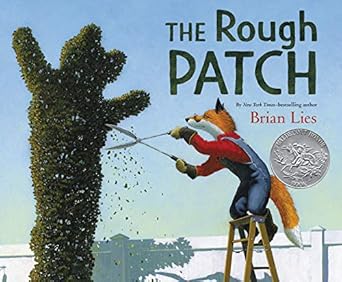
47. The Rough Patch by Brian Lies
When the main character’s pet dog dies, he can’t stand to have anything pretty around him. His garden becomes overgrown and ugly, reflecting his anger. But after a pumpkin persists and he takes it to the county fair, will he have a change of heart when he has the option to choose a new puppy?
This story and the powerful illustrations are a great discussion starter for how we feel after we lose someone, and how we can start feeling hopeful again.
Buy it: The Rough Patch
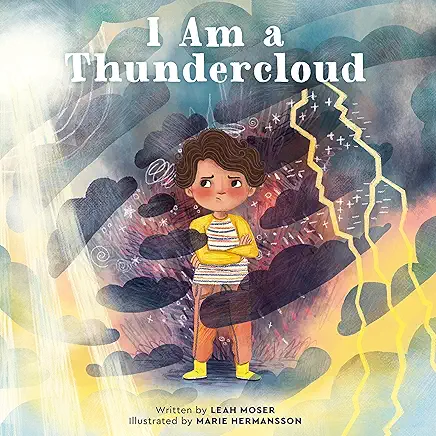
48. I Am a Thundercloud by Leah Moser
In this first-person story, a girl experiences a bad day and the big feelings that come with it as a thunderstorm. Use this book to start exploring and describing how we experience big feelings, especially negative feelings that can overwhelm young kids.
Buy it: I Am a Thundercloud
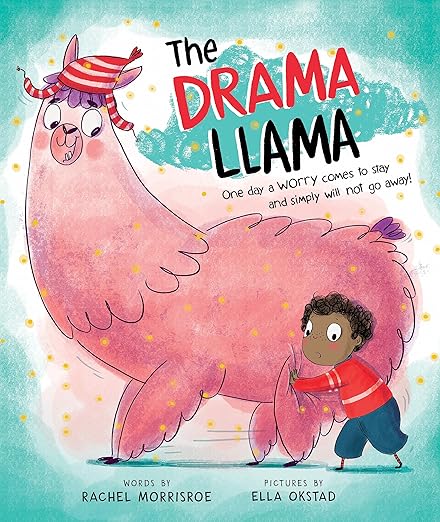
49. The Drama Llama by Rachel Morrisroe
A boy’s anxiety shows up as a llama, and after some comedic endeavors, the boy talks to an adult to share his worries and fears. This is a fun way to discuss anxiety with students and encourage them to seek help when their feelings feel, well, like too much drama.
Buy it: The Drama Llama

50. Finding Grateful by Dianne White
This lyrical text explores gratitude and encourages students (and adults) to take time to pause, reflect, and find positivity and gratitude in the little moments. Use this book to increase mindfulness during morning meeting or brain breaks.
Buy it: Finding Grateful
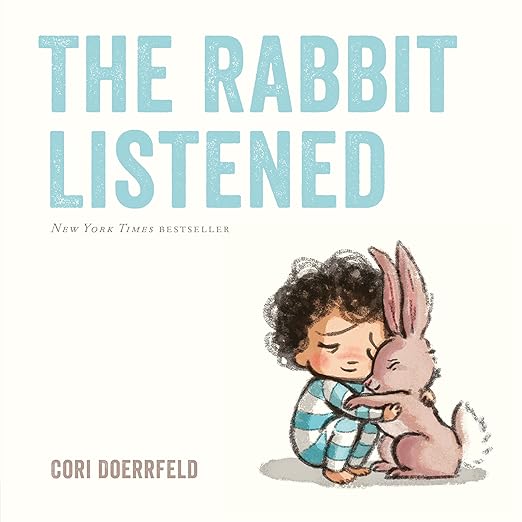
51. The Rabbit Listened by Cori Doerrfeld
When Taylor’s tower comes crashing down, all the animals come to help. They each have their own idea, but all Taylor needs is someone to listen. This story is brilliant in its simplicity, teaching us that sometimes a listening ear is the best way we can help.
Use this book before things come crashing down in your classroom to help students understand ways to help a friend who is frustrated.
Buy it: The Rabbit Listened

52. A Sick Day for Amos McGee by Philip C. Stead
This story, about how zookeeper Amos McGee’s friends support him when he’s sick, is endearing and warm. It’s about how when we give, we get more in return.
Read this book and talk about what friendship mean to each character. Then, retell the story using puppets.
Buy it: A Sick Day for Amos McGee

53. Silver Linings by Fiona Woodcock
If you have a student who needs to build resilience and empathy, this book is for you. Pip gets disappointed when things don’t go as planned, and Parker is there to help lift her spirits and help her see things from another perspective. But when Parker has a problem, will Pip help him out?
Use this friendship book to teach empathy and resilience.
Buy it: Silver Linings

54. Lola and the Troll by Connie Schultz
When a troll-like figure teases Lola, she tries to change to avoid the attention. Unfortunately, the loses herself in the process. Lola stands up to the troll and finds that it’s a boy who’s looking for attention. Lola forgives the boy, who apologizes, and they start a friendship.
Use this book to discuss how to respond to unwanted attention, and to build empathy and stay true to yourself.
Buy it: Lola and the Troll
Grab your printable list of best social skills books for all grades

Click the button below to share your email address and get instant access to the list!
Plus, check out Books To Teach Kids About Mindfulness.
Want more book lists and classroom ideas be sure to subscribe to our newsletters, you might also like.

15 Resources To Teach the 2024 Presidential Election
Teach about the election process in ways that won’t leave you with a class divided. Continue Reading
Copyright © 2024. All rights reserved. 5335 Gate Parkway, Jacksonville, FL 32256

IMAGES
VIDEO